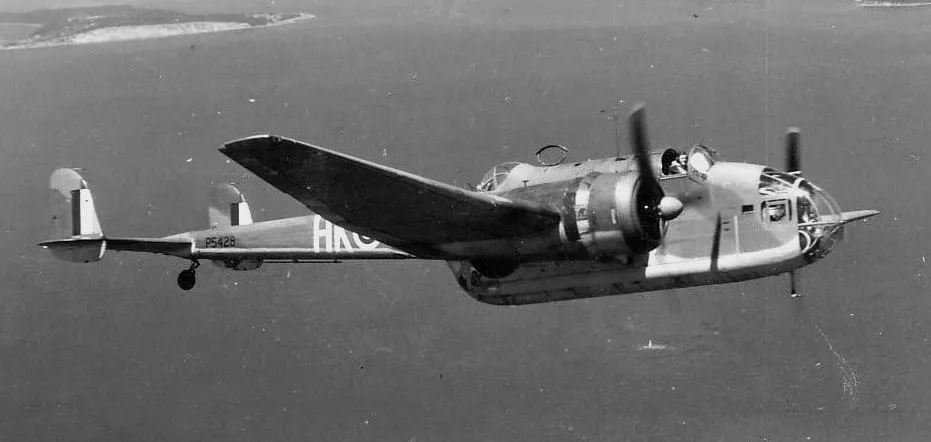Porter, Raymond Robert George (Pilot Officer)
Killed in Flying Accident 1943-October-16


Birth Date: 1918-February-10
Born: Annandale New South Wales, Australia
Parents: Son of John James Porter and Stella May Porter, of Five Dock, New South Wales, Australia
Spouse:
Home: Five Dock, New South Wales, Australia
Enlistment:
Enlistment Date: 1940-July-29
Service
RAAF
Unit
32 (OT) OTU- Operational Training Unit (RAF)
Base
Patricia Bay, British Columbia, Canada
Rank
Pilot Officer
Position
Wireless Operator/Air Gunner
Service Numbers
21526
Crew or Other Personnel
Hampden AN132
Accident Card - Handley Page Hampden Mk. I serial:AN132
This accident involved 1 aircraft on 1943-October-16. Hampden s/n AN132.
This accident involved 4 people. Allcorn RF, Hornbrook PF, Porter RRG, Smith MCB
This accident had 4 fatalities. Sergeant Mervyn Charles Bruce Smith RAAF Killed in Flying Accident service no:423098 Hampden AN132, Pilot Officer Raymond Robert George Porter RAAF Killed in Flying Accident service no:21526 Hampden AN132, Sergeant Ronald Frank Allcorn RAFVR Killed in Flying Accident service no:1318169 Hampden AN132, Sergeant Peter Francis Hornbrook RAFVR Killed in Flying Accident service no:1586682 Hampden AN132
Hampden serial: AN132

Handley Page Hampden (Serial No. P5428), of No. 32 Operational Training Unit at RCAF Patricia Bay, British Columbia, in the torpedo-bomber training role between May 1942 and February 1944.
Handley Page developed a modern stressed-skin mid-wing monoplane, powered by Bristol Pegasus radial air cooled engines, with its first flight in 1936. It had the most advanced wings available at the time, giving it a remarkably low landing speed of 73 mph for an aircraft of its size, with a top speed of 265 mph. The Hampden had a short, narrow but tall main fuselage with a very slender tail unit. This configuration led to the nicknames "Flying Panhandle" and "Flying Suitcase". At the end of the war, no complete or partial Hampden aircraft were retained for museum display.
The Hampden served in the early stages of the war, bearing the brunt of the early bombing war over Europe, taking part in the first night raid on Berlin and in the first 1000-bomber raid on Cologne. In Canada, Hampdens were built by six companies that formed Associated Aircraft. There were three in Ontario and three in Quebec, hence they were identified as the Ontario Group and Quebec Group. They supplied all the the components to the two assembly plants. The Ontario Group's assembly plant was at the Malton Airport, while the Quebec group's assembly plant was at the St. Hubert Airport. Canadian Museum of Flight and Harold A Skaarup web page
Aircraft Images
Hampden AN132
Hampden Mk. I AN132
With No. 32 OTU at RCAF Station Patricia Bay, BC. Cat "B" accident when a/c ran off end of runway on attempted takeoff at Patricia Bay on 8 December 1942, collapsing landing gear. Later hit a hill and crashed near Maggie Lake close to Ucluelet, BC on a night navigation exercise on 16 October 1943. All 4 crew killed; Flight Sergeant R. Allcorn, Flight Sergeant P. Hornbrook, Flight Sergeant R. Porter and Flight Sergeant (RAAF) M. Smith. The wreckage was not located until 6 July 1945, and was then left on site. Wreckagerecovered post war, and pieces used to restore #P5436, now on display at Canadian Museum of Flight, Langley, BC.
1942-01-06 Taken on Strength 2019-08-20
1942-December-08 Accident: 32 Operational Training Unit Loc: Patricia Bay Names: Cordingley | Johnson | Reid | Vevers
1943-October-16 Accident: 32 Operational Training Unit Loc: Names: Allcorn | Hornbrook | Porter | Smith
1943-11-25 Struck off Strength 2019-08-20
Unit Desciption
32 (OT) OTU (32 Operational Training Unit)
The Operational Training Unit (OTU) was the last stop for aircrew trainees. They spent 8 to 14 weeks learning to fly operational aircraft (Hawker Hurricane or Fairey Swordfish, e.g.). The instructors had experience in actual operations, and often were posted to OTUs after their operational tour.
More information on the RCAF Station at Patricia Bay, British Columbia can be found at:
RCAF.info - Patricia Bay, British Columbia

